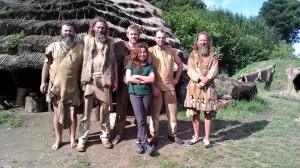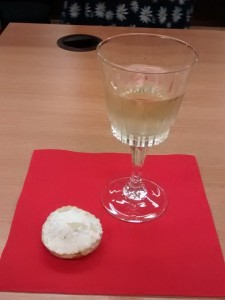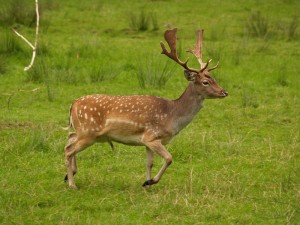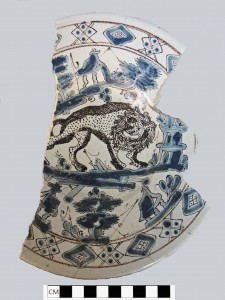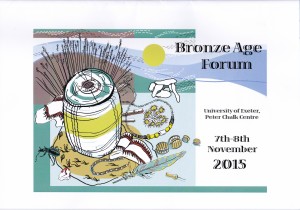The programme for our Research Seminar Series 2016 has been announced! All are welcome to come and listen to our fascinating speakers on a variety of topics. The usual time and place are Fridays, 2pm in LT3 (Laver Building), although please check the programme below for any deviations. Our first seminar of the term starts on the 15th January, and you can follow all the action via summaries on our blog!
Research Seminar #11: “The Use and Reuse of Stone Circles” by Richard Bradley
Richard Bradley came to talk to us before Christmas about the use and reuse of stone circles. In a fascinating presentation he took us through many early Bronze age sites, describing their possible original purpose and showing the archaeological evidence for later use and, in some cases, destruction. Right up to Christian times stone circles were being used as a strategic reference back to local and non-Christian traditions. Bradley also showed that in the modern period new stone circles are being built all the time, and thus the cycle continues.
Grants Awarded to Exeter Archaeology PhD Students
Two of our PhD students have recently been awarded grants for archaeological experiments and analysis related to their PhD topics!
Alice La Porta, one of our AHRC SWW DTP PhD students under the supervision of Linda Hurcombe and Rob Hosfield (University of Reading), has been awarded two grants. The first grant will fund Alice’s experiments into the uses of Middle Palaeolithic (i.e. Neanderthal) stone tools, with an emphasis on their performance and subsequent use-traces, for which Alice will be spending time at open-air museums in Germany, Denmark and Finland. The second grant will enable Alice to make a study visit to the Institut Català de Paleoecologia Humana i Evolució Social in Tarragona, to examine a Middle Palaeolithic archaeological collection, with a particular emphasis on use-wear analysis.
Matthew Knight, another of our AHRC SWW DTP PhD students, supervised by Linda Hurcombe and Joanna Brück (University of Bristol), has also been awarded a grant for experimental activities. Matt will be conducting experiments with a variety of Bronze Age metal objects that have never been undertaken before. He will be utilising replica daggers, swords, socketed axes and barbed spearheads in a variety of use experiments, before subjecting them to a series of destructive practices to reproduce criteria and conditions seen on prehistoric artefacts. These experiments will result in the first ever reference collection for studying destruction of Bronze Age metalwork.
Very well done to both Alice and Matt; we can’t wait to see the results of your experiments!
Research Seminar #10: “5000 Years of Camelid Herding in the Andes” by Dr. Penny Dransart
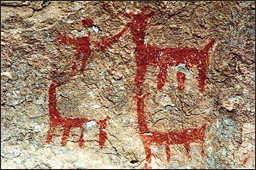
The Rock Art Site of Calacala, Bolivia. Credit: http://www.bradshawfoundation.com/bolivia/calacala.php
This week’s research seminar was presented by Dr. Penny Dransart on the development and continuation of the pastoral care of camelids in the Chilean Andes over the last several thousand years. The high altitudes and steppe regions of these mountains make them largely unsuitable for the cultivation of crops, so nomadic herding is the main subsistence that can be sustained here. Penny’s work explores the long-term continuity of herding practices and the use of pastures to keep camelid herds through exploration of the ethnographic and archaeological records, as well as a broad brush approach to understanding camelids.
Prosecco-ral Archaeology: PG Seminar Christmas Party
Last night we had our Student Seminar (PGtips) Christmas Party! PGtips happens once every three weeks or so; it’s a chance for PhD and Masters students to give short presentations on their research and to get feedback and new ideas from the postgraduates in the department. It’s a great way for the Exeter Archaeology Postgrads to keep at the cutting edge of research, and it’s an important social gathering as well, supported by wine and baked goods courtesy of its attendees. Continue reading
Research Seminar #9: “The Fallow Deer, 10kBP to Present” by Dr Naomi Sykes
Naomi Sykes came to talk to us about the work of the Fallow Deer project. In a fascinating presentation she divulged a wealth of information about Dama dama past and present, and how the work of the project will impact, and is indeed already impacting, the future.

Research Seminar #8: PG takeover!
We were treated to a very different kind of research seminar on Friday when three of our PhD researchers bravely took the stage to present on their work. The three students had recently given these papers at EAA Glasgow and were invited to share them with the department, which was great for those who couldn’t make it to Scotland in September! In a break from the usual format, each student gave a 20 minute presentation followed by questions. The turnout was fantastic, it was great to see such support for postgraduate research! There was even a live tweet going on – follow it with the hashtag #PGtakeover.
Research Seminar #7: “Ceramic ware as a medium to explore blood purity” by Dr Veronica Velasquez
Dr. Velasquez discussed her very interesting PhD research into changes in the ceramic craft industry in colonial Mexico from approximately the seventeenth century onwards in her talk entitled “Untainted lineages: Ceramic ware as a medium to explore the doctrine of blood purity in Colonial Mexico”. She examined ceramic assemblages from a number of sites in Mexico City that were ranked in terms of social status. Expensive ceramic tableware used at some of these sites included Chinese porcelain in addition to majolica ware, and Dr. Velasquez linked stylistic and ornamentation changes in these ceramics with social changes in colonial Mexico. Some of these social changes including a preference for strict religious piety and avoidance of decorative or gluttonous lust, including in food consumption and dining practices, may be correlated with the use of ‘pure’ tableware such as the white maiolica ceramics.
The Bronze Age Forum
On the 7th and 8th November, the Bronze Age Forum came to Exeter. This event, celebrating the ongoing research by Bronze Age scholars across Europe, only occurs once every two years, so it seemed most apt that it came to our University to coincide with the retirement of our own Bronze Age professor: Anthony Harding. The standard, of course, was high and yours truly had the esteemed position of opening the conference – an act of cruelness or kindness by Anthony depending on your perspective! Papers on the first morning were dominated by metalwork, with some fascinating research on Europe-wide projects being discussed by independent researchers from the likes of Berlin University and Oxford Archaeology, as well as larger project teams, from the British Museum and Leiden University.
Research Seminar #6: “A reinterpretation of Middle-Eastern Neolithic mortuary practices” by Dr. Karina Croucher
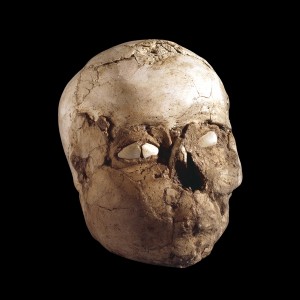
Plastered skull now in the collection of the British Museum, from Jericho, Israel, 7000-6000 BC. Photo credit: British Museum
Dr. Kroucher’s talk discussed the plastered skulls sometimes found in burials across the Near Eastern Neolithic, at sites including Ein Ghazal and Chatalhoyuk. Approximately 90 skulls have been recovered from across the Near East where the skull of an individual has been plastered over after death and decomposition. Some plastered skulls have shells or stones in place for eyes, and sometimes colourings such as browns or pinks were used probably to make the skull look more life-like. An absence of plaster on most skulls where hair would have been has led some researchers to suggest that wigs or hair may have been attached to the skulls. The reasons for some skulls being plastered and displayed are unclear and Dr. Kroucher’s research questions related to understanding the practice of skull-plastering and whether we can use contemporary theories of grief and mourning to inform on past mortuary practices.


